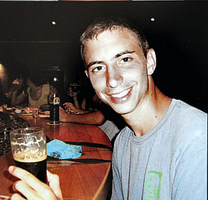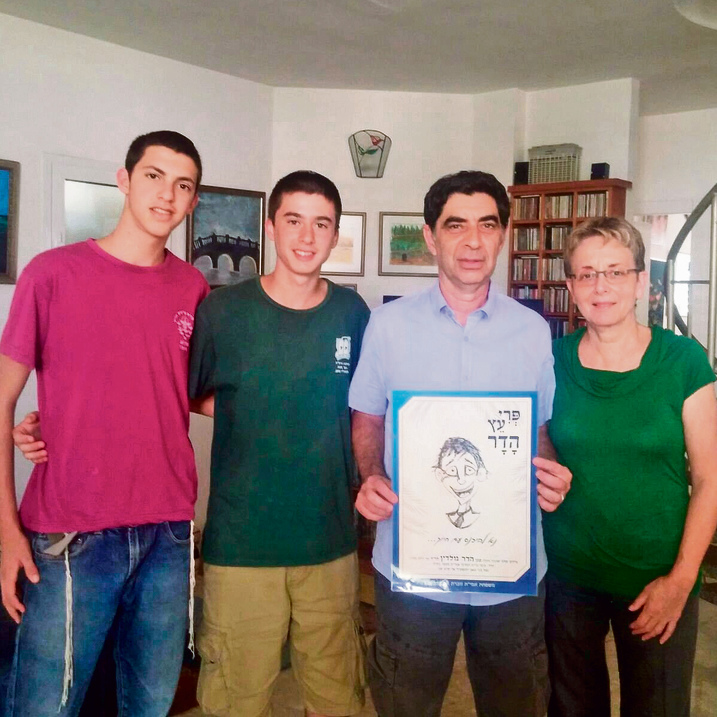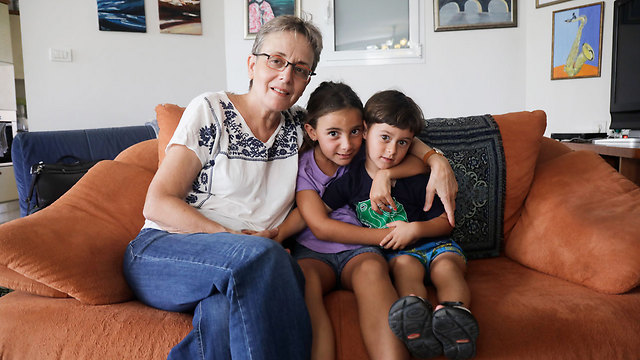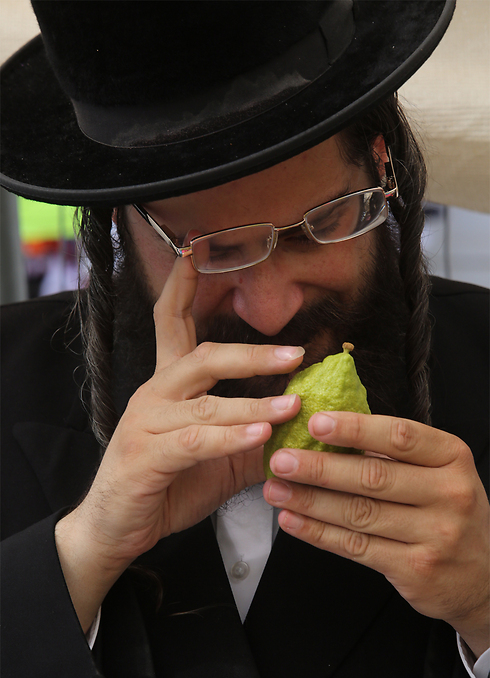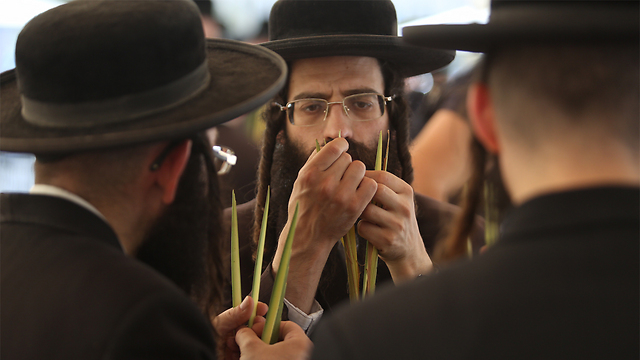
Israel celebrates Sukkot
Festival of harvest and fall welcomed by Israelis; President Rivlin opens his home, sukkah to country's citizens inviting them to reconnect with Diaspora Jewry; self-portrait made by Hadar Goldin circulates as sukkah decoration by Amit students; four species prove costly as ever.
Sukkot nationwide have already been decorated, the last pots are already bubbling on the stove and there's a positively festive ambiance in the air: Israel is celebrating Sukkot, the traditional feast of harvest and a harbinger of autumn.
Weather during the holiday and the weekend following is expected to be pleasant. Meteorologist Tzachi Waxman of Meteo Tech said temperatures will be average for the season, with pleasant weather near the coast and slightly chilly temperatures in the mountains.
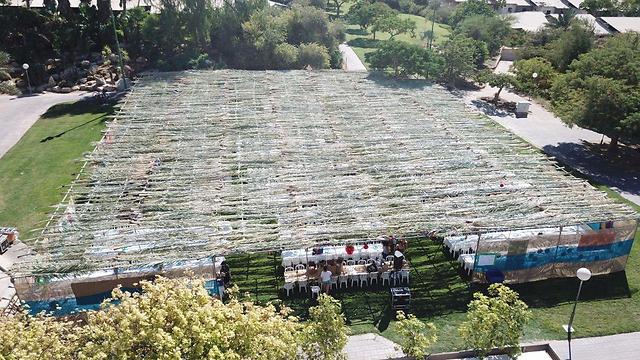
Chabad of Israel have made preparations for the holiday, erecting 1,000 public sukkot in city centers, 50 mobile sukkot-on-wheels traveling Israel's roads and—for the first time ever—50 "sukkot for hikers" put up in popular outdoor hotspots and allowing even those out and about to observe the holiday properly.
In addition, Chabad has created thousands of four species sets for use by the public, especially members of security services and forces, people hospitalized during the holiday and the elderly.
"In the Torah, Sukkot is a time of joy and unity, and we try our best so every man and woman in Israel can have a bit of both: joy and the feeling of togetherness," said Rabbi Yosef Aharonov.
President marks Sukkot by reconnecting with Diaspora Jewry
As every year, the festival will not be passing Israel's first citizen by, with an "open sukkah" built in the President's Residence and hosting all comers.
This year, despite strains on the usually cordial relations between Israel and Diaspora Jews with the Conversion Bill and the freezing of the "kotel agreement," President Reuven Rivlin decided to dedicate the annual "open sukkah" at the President's Residence to Jews living abroad.
In the past few months, the president received overtures from many Jews around the world recounting their unease at their relationship with Israel.
"It's important to listen and to study each other in order to reach a better understanding of each other," the president said to the heads of the Conference of Presidents of Major American Jewish Organizations in a conference call for the Jewish New Year.
The open sukkah has been a tradition at the President's Residence for decades. This year, visitors will be able to gander at eye-popping displays presenting information about Jewish communities from around the world.
The displays will include a theatrical hot air balloon and a flying sukkah, illustrating the journey "around the world" visitors will be taking. Also available will be a boulevard of trailblazers in Jewish history and culture and mirrors with thought-provoking questions about identity, familiarity with one's family and more.
The president will be visiting the different areas of the open sukkah on occasion to make speeches and welcome visitors all throughout the day.
The President's Residence invited all Diaspora Jews currently visiting Israel for the holiday to join the festivities.
'Please enter with a smile!'
Not only the president's sukkah was joyously made up, however, as tens of thousands of sukkot nationwide were hung with ornaments and decorations.
This year, alongside the usual fare of colored lights and paper models of the four species, a new, extraordinary decoration will be observed: a drawing by Hadar Goldin.
Goldin, who fell in battle in the Rafah area during Operation Protective Edge, drew a self-portrait of his smiling face, which he hung on the door to his room, along with the instruction, "Please enter with a smile!"
The fallen soldier's body is still being held by Hamas. In anticipation of this year's holiday, students from the Amit chain of schools wished to commemorate Goldin by distributing posters replicating the drawing, suitable for hanging in the public's sukkot.
Amit students handed out the posters in many cities across the country, and thousands of copies of Goldin's drawing will also be available in synagogues.
"Hadar is a guest who must be present in everyone's sukkah," said Shira Levy, a student of the Amit religious girls' school in Givat Shmuel.
Goldin's parents, Prof. Simcha and Dr. Leah Goldin, received the poster of their son's smiling visage from Amit students in a moving meeting that took place at the Kfar Batya school Hadar attended himself.
"Your project, whose aim is bringing Hadar's smile to the homes of Israel, is of tremendous help in the struggle to bring Hadar's body to burial in his homeland," Simcha wrote Amit's principals.
"We consider it a moral duty to commemorate our alumnus Hadar, to stand by his family and to remind everyone Israel still has two soldiers who have yet to return home from the war," said Amit Director-General Dr. Amnon Eldar.
The Bnei Akiva movement, meanwhile, inaugurated a project sending the movement's young members to volunteer with seniors and persons with disabilities, to build sukkot for them and to then dismantle them when the holiday ends.
The project will be dedicated to the memories of Major Benaya Sarel and Sergeant Bnaya Rubel, who also fell in Operation Protective Edge, and of Major Benaya Rein, who fell during the Second Lebanon War.
On the prowl for the perfect set
With the decorations taken care of, all that's left is a nice collection of the four species.
Sukkot has been looming large, and markets proffering the holiday's four species have been doing brisk business, with prices soaring for pristine specimens.
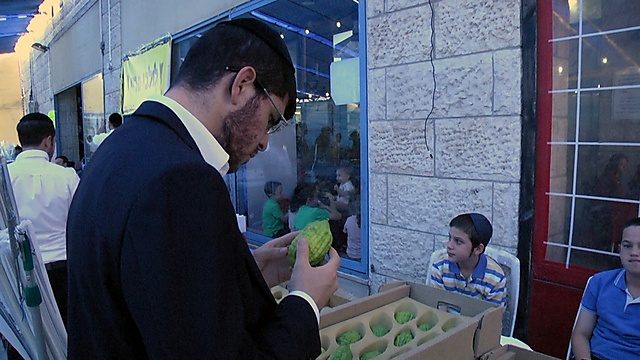
In a holiday where extravagance is not only accepted but encouraged, even Israel's usually-thrifty religious populace is willing to splurge on anything from a towering sukkah to outstanding items from the four species.
It's not uncommon to observe men breaking out magnifying glasses to more closely examine the etrog for any flaws and paying top-shekel for especially attractive examples.
Prices, it turns out, vary by observance. Some sets will cost the customer as little as NIS 75, graded as "kosher for blessing," which is the lowest grade.
Ido Kornfeld, a four species purveyor from Givat Shmuel, said a "mehudar" set costs NIS 90, whereas a "mehardin mehamehadrin"—or the highest possible grade—can cost as much as NIS 100 or 120.
"A lulav as straight as an arrow"
In the open market, however, the sky—observable from your sukkah—seems to be the limit. "The most expensive lulav in my stall will set you back NIS 750," said Nissim Haddad, a vendor at a four species market in Jerusalem's Rav Shefa Mall.
Why so expensive? "It's as straight as an arrow, very clean and orderly," he explained.
In Noam's stall, meanwhile, the most expensive lulav is only NIS 150. "Hermetically sealed. Touched only by rabbis. The etrog, though, can be thousands of shekels. We just sold one for NIS 500," he added.
Back in Haddad's stall, etrogim are available for NIS 850, which "isn't considered very expensive," he claimed.
It appears prices are determined, apart from the market forces of supply and demand, also by the cleanliness, color, strength of the etrog's pitam, the length of the hadass and, naturally, the kashrut grade given to the species, with one merchant saying, "The senior the rabbi, the higher the price."
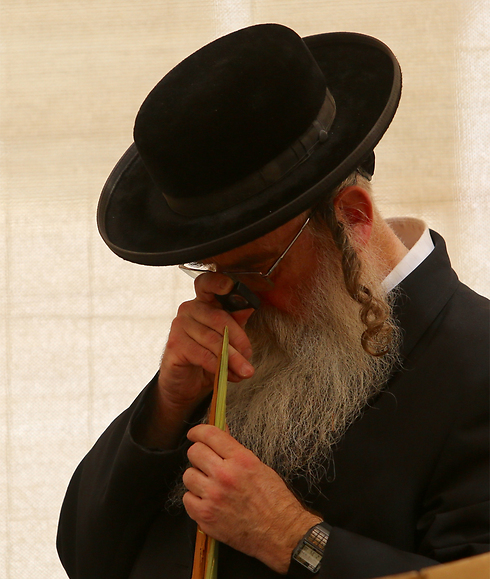
Asked what sets them apart from other items available, Haddad happily explained. "They were hand chosen by observant Jews, examining the size of the leaf and the length of the stalk. Each leaf was closely examined, and the price matches the work," he elucidated.
Eli Mendelbaum, Itamar Eichner, Meir Turgeman, Matan Tzuri, Israel Moskowitz, Amir Ben-David, Tamar Trabelsi-Hadad and Goel Beno contributed to this report.













